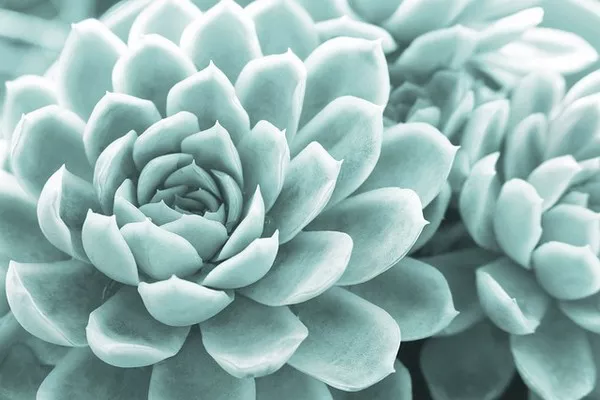Succulents have gained immense popularity in recent years due to their unique beauty and low-maintenance nature. These resilient plants are known for their ability to thrive in arid conditions and store water in their leaves, stems, or roots. While succulents are generally easy to care for, achieving optimal growth and size requires some specific techniques and considerations. In this comprehensive guide, we will explore the best practices for cultivating succulents and fostering their growth to reach their full potential.
Understanding Succulent Anatomy and Physiology
Before delving into the methods for promoting succulent growth, it’s essential to understand the unique anatomy and physiology of these plants. Succulents have evolved various adaptations to survive in dry climates, including specialized water-storage tissues and mechanisms to reduce water loss through transpiration. Their thick, fleshy leaves or stems are designed to store water for extended periods, allowing them to endure drought conditions.
Selecting the Right Succulent Species
Not all succulents are created equal when it comes to growth potential. Some species naturally grow larger and faster than others. When aiming to cultivate sizable succulents, it’s crucial to choose species known for their vigorous growth habits. Some popular choices include Aloe vera, Echeveria, Sedum, and Crassula. Researching the growth patterns and requirements of different species can help you select the most suitable candidates for your desired size.
Providing Optimal Growing Conditions
Creating the ideal environment is paramount for encouraging succulent growth. While succulents are adaptable plants, they thrive under specific conditions:
1. Sunlight: Succulents typically require ample sunlight to thrive. Place them in a location where they can receive at least six hours of bright, indirect sunlight per day. South-facing windows or outdoor areas with partial shade are ideal.
2. Temperature: Most succulents prefer warm temperatures ranging from 65°F to 85°F (18°C to 29°C) during the day and slightly cooler temperatures at night. Avoid exposing them to extreme cold or hot conditions, as this can stunt their growth or cause damage.
3. Well-draining Soil: Succulents are susceptible to root rot if left in soggy soil for prolonged periods. Plant them in a well-draining potting mix specifically formulated for succulents and cacti. You can also amend regular potting soil with perlite, coarse sand, or pumice to improve drainage.
4. Watering: While succulents are drought-tolerant, they still require occasional watering. Water them thoroughly when the soil is completely dry, but be sure to allow excess water to drain away. Overwatering is one of the most common causes of succulent death and can inhibit growth.
5. Air Circulation: Adequate air circulation is essential for preventing fungal diseases and promoting healthy growth. Avoid crowding succulents together, especially in humid environments, and provide sufficient space between plants.
Pruning and Propagation Techniques
Regular pruning can help maintain the shape and size of your succulents while stimulating new growth. Remove dead or decaying leaves, stems, or flowers using sterile pruning shears to prevent the spread of disease. Additionally, you can propagate succulents through various methods, such as leaf cuttings, stem cuttings, or division. Propagation allows you to create new plants from existing ones and can rejuvenate older succulents, promoting robust growth.
Fertilizing Succulents for Enhanced Growth
While succulents can thrive in nutrient-poor soil, supplementing them with fertilizer can boost growth and overall health. Choose a balanced, water-soluble fertilizer specifically formulated for succulents and apply it sparingly during the growing season, typically spring and summer. Avoid over-fertilizing, as excessive nutrients can lead to salt buildup in the soil and cause harm to the plants. Follow the manufacturer’s instructions for dilution and frequency to ensure optimal results.
Monitoring for Pests and Diseases
Despite their hardiness, succulents are still susceptible to pests and diseases that can hinder growth and vitality. Common pests include aphids, mealybugs, spider mites, and scale insects, which can feed on succulent tissues and sap vital nutrients. Inspect your plants regularly for signs of pest infestation, such as sticky residue, webbing, or distorted growth, and take prompt action to address any issues. Additionally, watch for symptoms of fungal infections, such as rotting or discolored tissue, and treat affected plants with appropriate fungicides or neem oil.
Patience and Persistence
Finally, it’s essential to remember that growing succulents to their full potential takes time, patience, and experimentation. Each succulent is unique, and factors such as species, environment, and care practices can influence growth rates and outcomes. Don’t be discouraged by setbacks or slow progress; instead, enjoy the process of nurturing your succulents and witnessing their gradual development over time.
Conclusion
By implementing these strategies and techniques, you can maximize the growth and size of your succulents, creating stunning displays of lush, vibrant foliage. Whether you’re a novice enthusiast or a seasoned gardener, cultivating healthy, thriving succulents is a rewarding endeavor that brings beauty and tranquility to any space.


